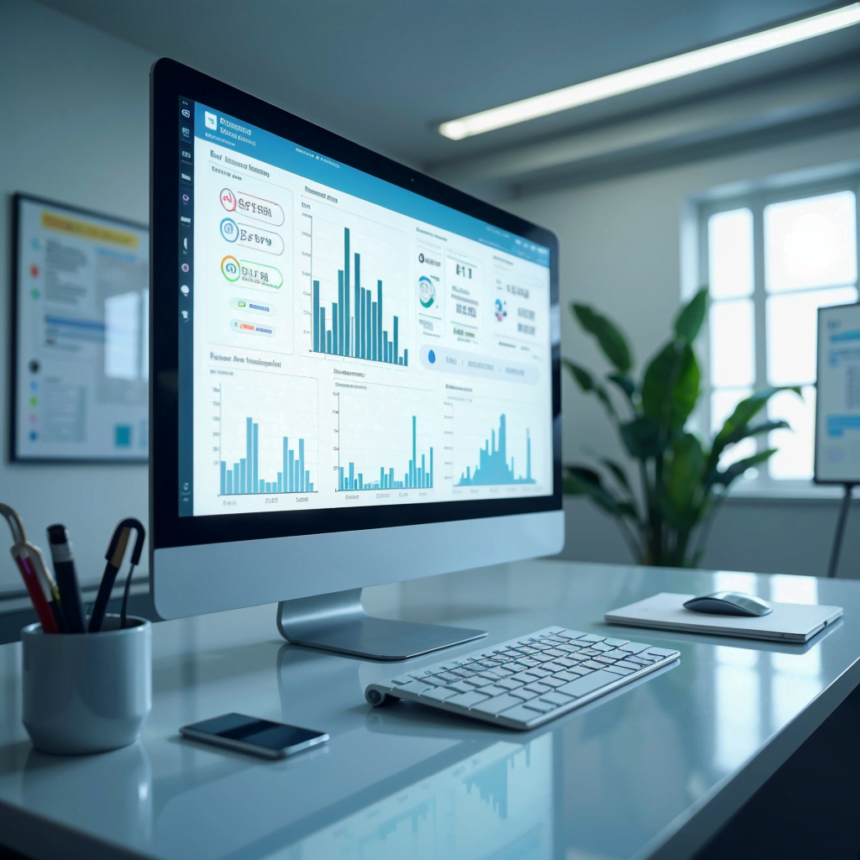Healthcare facilities are among the most complex and critical environments to manage. With stringent regulations, high patient volumes, and life-saving equipment in constant use, the stakes are incredibly high. In such settings, the importance of ensuring that all equipment and infrastructure are functioning optimally cannot be overstated. This is where Maintenance Management Software, also known as Computerized Maintenance Management Systems, plays a vital role. Maintenance Management Software is revolutionizing how healthcare facilities manage their maintenance operations, ensuring a safe, efficient, and compliant environment for both patients and staff.
Enhancing Equipment Reliability and Safety
One of the primary functions of Maintenance Management Software in healthcare is to enhance the reliability and safety of medical equipment. Hospitals and clinics rely heavily on a wide range of devices, from basic diagnostic tools to complex life-support systems. Any failure or malfunction of these devices can have dire consequences, including putting patients’ lives at risk.
Maintenance Management Software helps prevent such scenarios by enabling proactive maintenance strategies. Through automated scheduling, the software ensures that regular inspections, calibrations, and preventive maintenance tasks are performed on time. This not only extends the lifespan of equipment but also minimizes the likelihood of unexpected failures. Additionally, the software can track the history of each piece of equipment, providing valuable insights into its performance and maintenance needs. This data-driven approach allows healthcare facilities to make informed decisions about repairs, replacements, and upgrades, ultimately improving patient safety.
Streamlining Maintenance Operations
Healthcare facilities are vast, often comprising multiple buildings with complex systems such as HVAC, plumbing, electrical, and more. Managing maintenance tasks across such extensive infrastructure can be daunting. Maintenance Management Software streamlines these operations by centralizing all maintenance activities in one platform.
With Maintenance Management Software, maintenance teams can easily create, assign, and track work orders. This ensures that issues are addressed promptly and that no task falls through the cracks. Moreover, the software allows for real-time communication between maintenance staff, healthcare administrators, and other relevant departments. This seamless coordination ensures that maintenance work is carried out efficiently, with minimal disruption to healthcare services.
In addition to routine maintenance, the software also plays a crucial role during emergencies. Whether it’s a sudden power outage or a critical piece of equipment breaking down, Maintenance Management Software can quickly alert the necessary personnel and provide them with detailed information on the issue. This rapid response capability is essential in healthcare settings where every minute counts.
Ensuring Compliance with Regulations
The healthcare industry is heavily regulated, with strict guidelines governing the maintenance and operation of equipment and facilities. Failure to comply with these regulations can result in severe penalties, including fines, legal action, and loss of accreditation. Maintenance Management Software helps healthcare facilities stay compliant by maintaining detailed records of all maintenance activities.
These records include information on inspections, repairs, and replacements, as well as documentation of any regulatory checks or certifications. In the event of an audit, healthcare facilities can quickly generate reports from the software, demonstrating their compliance with industry standards. This not only helps avoid penalties but also builds trust with patients, regulators, and other stakeholders.
Reducing Costs and Improving Efficiency
Healthcare facilities operate on tight budgets, and the efficient use of resources is crucial. Maintenance Management Software contributes to cost savings by optimizing maintenance processes and reducing downtime. By implementing a preventive maintenance strategy, facilities can avoid costly emergency repairs and extend the lifespan of their equipment.
The software also provides valuable insights into the cost-effectiveness of different maintenance strategies. For instance, it can analyze the costs associated with repairs versus replacements, helping facilities make informed financial decisions. Furthermore, by automating routine tasks and reducing manual paperwork, Maintenance Management Software frees up staff time, allowing them to focus on more critical tasks.
Enhancing Patient Satisfaction
At the core of every healthcare facility is the goal of providing high-quality patient care. A well-maintained facility plays a significant role in achieving this goal. When equipment functions as expected and the facility is free from disruptions, patients experience smoother, more reliable care. Maintenance Management Software ensures that healthcare providers can focus on what they do best—caring for patients—without worrying about the reliability of their tools and infrastructure.
Additionally, the software contributes to a better patient experience by minimizing the likelihood of delays or rescheduling due to equipment failures. This not only enhances the overall efficiency of the facility but also builds patient trust and satisfaction.
Conclusion
Maintenance Management Software is an indispensable tool for healthcare facilities. By enhancing equipment reliability, streamlining operations, ensuring regulatory compliance, reducing costs, and improving patient satisfaction, the software plays a crucial role in maintaining the high standards required in healthcare. As the healthcare industry continues to evolve, the adoption of advanced maintenance management solutions will be key to ensuring safe, efficient, and patient-centered care.

